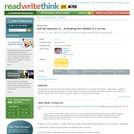
In this lesson, students learn to ask the right questions about the validity of surveys.
- Subject:
- English Language Arts
- Material Type:
- Activity/Lab
- Lesson Plan
- Provider:
- ReadWriteThink
- Provider Set:
- ReadWriteThink
- Date Added:
- 09/25/2013

In this lesson, students learn to ask the right questions about the validity of surveys.
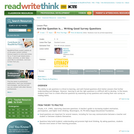
There's no question that students will be able to compose good survey questions by the end of this lesson.

Objectives Prospective registration of animal studies has been suggested as a new measure to increase value and reduce waste in biomedical research. We sought to further explore and quantify animal researchers’ attitudes and preferences regarding animal study registries (ASRs). Design Cross-sectional online survey. Setting and participants We conducted a survey with three different samples representing animal researchers: i) corresponding authors from journals with high Eigenfactor, ii) a random Pubmed sample and iii) members of the CAMARADES network. Main outcome measures Perceived level of importance of different aspects of publication bias, the effect of ASRs on different aspects of research as well as the importance of different research types for being registered. Results The survey yielded responses from 413 animal researchers (response rate 7%). The respondents indicated, that some aspects of ASRs can increase administrative burden but could be outweighed by other aspects decreasing this burden. Animal researchers found it more important to register studies that involved animal species with higher levels of cognitive capabilities. The time frame for making registry entries publicly available revealed a strong heterogeneity among respondents, with the largest proportion voting for “access only after consent by the principal investigator” and the second largest proportion voting for “access immediately after registration”. Conclusions The fact that the more senior and experienced animal researchers participating in this survey clearly indicated the practical importance of publication bias and the importance of ASRs underscores the problem awareness across animal researchers and the willingness to actively engage in study registration if effective safeguards for the potential weaknesses of ASRs are put into place. To overcome the first-mover dilemma international consensus statements on how to deal with prospective registration of animal studies might be necessary for all relevant stakeholder groups including animal researchers, academic institutions, private companies, funders, regulatory agencies, and journals.
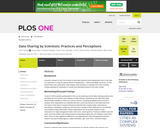
Background Scientific research in the 21st century is more data intensive and collaborative than in the past. It is important to study the data practices of researchers – data accessibility, discovery, re-use, preservation and, particularly, data sharing. Data sharing is a valuable part of the scientific method allowing for verification of results and extending research from prior results. Methodology/Principal Findings A total of 1329 scientists participated in this survey exploring current data sharing practices and perceptions of the barriers and enablers of data sharing. Scientists do not make their data electronically available to others for various reasons, including insufficient time and lack of funding. Most respondents are satisfied with their current processes for the initial and short-term parts of the data or research lifecycle (collecting their research data; searching for, describing or cataloging, analyzing, and short-term storage of their data) but are not satisfied with long-term data preservation. Many organizations do not provide support to their researchers for data management both in the short- and long-term. If certain conditions are met (such as formal citation and sharing reprints) respondents agree they are willing to share their data. There are also significant differences and approaches in data management practices based on primary funding agency, subject discipline, age, work focus, and world region. Conclusions/Significance Barriers to effective data sharing and preservation are deeply rooted in the practices and culture of the research process as well as the researchers themselves. New mandates for data management plans from NSF and other federal agencies and world-wide attention to the need to share and preserve data could lead to changes. Large scale programs, such as the NSF-sponsored DataNET (including projects like DataONE) will both bring attention and resources to the issue and make it easier for scientists to apply sound data management principles.

The 12th grade learning experience consists of 7 mostly month-long units aligned to the Common Core State Standards, with available course material for teachers and students easily accessible online. Over the course of the year there is a steady progression in text complexity levels, sophistication of writing tasks, speaking and listening activities, and increased opportunities for independent and collaborative work. Rubrics and student models accompany many writing assignments.Throughout the 12th grade year, in addition to the Common Read texts that the whole class reads together, students each select an Independent Reading book and engage with peers in group Book Talks. Language study is embedded in every 12th grade unit as students use annotation to closely review aspects of each text. Teacher resources provide additional materials to support each unit.

Students will consider the different ways that humor can be used by a writer to criticize people, practices, and institutions that he or she thinks are in need of serious reform. Students will read satirists ranging from classical Rome to modern day to examine how wit can be used to make important points about culture.
ACCOMPLISHMENTS
Students research an aspect of modern life that they would like to lampoon.
Students read from satirists across history to absorb the style and forms of humor and institutions satirized.
Students write their own satire, drawing on techniques of famous satirists to criticize their targets.
GUIDING QUESTIONS
These questions are a guide to stimulate thinking, discussion, and writing on the themes and ideas in the unit. For complete and thoughtful answers and for meaningful discussions, students must use evidence based on careful reading of the texts.
What is satire, and when is it too harsh?
How can humor and irony make you more persuasive?
What do you think is funny? How far would you go to satirize it?
Who gets more reaction—satirists or protestors?

In this lesson, students will conference with their teacher at some point and finish their satirical video. If Students have time, they can ask for input from another group one more time.

This course provides business students an alternative to the mechanistic view of strategy execution that reframes an organization as a complex network of teams continuously adjusting to market conditions and to other teams. The Flexible Execution Model is introduced consisting of seven elements that together shape how well an organization executes its strategy. Practical tools that help leaders achieve their organizations' strategic priorities are discussed. The course also explores novel ways to use data including surveys, Glassdoor reviews, and other sources to measure strategy execution and identify what is and is not working.
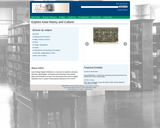
Iowa Heritage Digital Collections is a resource for students, educators, historians, genealogists, and anyone else interested in the people, places and institutions of Iowa. The site provides free access to digital collections from a variety of Iowa cultural institutions.
This website is a collection of Iowa History resources for educators, teachers, historians, and anyone interested in Iowa and its people, culture and places. It provides free access to digital collections from Iowa cultural institutions
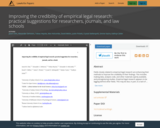
Fields closely related to empirical legal research are enhancing their methods to improve the credibility of their findings. This includes making data, analysis code, and other materials openly available, and preregistering studies. Empirical legal research appears to be lagging behind other fields. This may be due, in part, to a lack of meta-research and guidance on empirical legal studies. The authors seek to fill that gap by evaluating some indicators of credibility in empirical legal research, including a review of guidelines at legal journals. They then provide both general recommendations for researchers, and more specific recommendations aimed at three commonly used empirical legal methods: case law analysis, surveys, and qualitative studies. They end with suggestions for policies and incentive systems that may be implemented by journals and law schools.
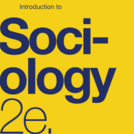
Introduction to Sociology 2e adheres to the scope and sequence of a typical, one-semester introductory sociology course. It offers comprehensive coverage of core concepts, foundational scholars, and emerging theories, which are supported by a wealth of engaging learning materials. The textbook presents detailed section reviews with rich questions, discussions that help students apply their knowledge, and features that draw learners into the discipline in meaningful ways. The second edition retains the book’s conceptual organization, aligning to most courses, and has been significantly updated to reflect the latest research and provide examples most relevant to today’s students. In order to help instructors transition to the revised version, the 2e changes are described within the preface.


Differentiate between four kinds of research methods: surveys, field research, experiments, and secondary data analysisUnderstand why different topics are better suited to different research approaches

Based on the PennSEL initial state survey, this Google form includes sections and questions from those reports. Intended for LEAs to take proir to PL and after PL.
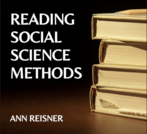
Science has great potential to benefit society, but this potential comes with risks as well. Directed at introductory level social science and humanities majors, this textbook teaches the rules and limits of social science methods. Reisner starts from the assumption that it is not necessary to be able to do research to read and judge the soundness of research publications. The chapters guide students through an explicit set of rules for reading research articles developed from three common research methods: content analysis, survey research, and experimental method.

This course develops skills in research design for policy analysis and planning. The emphasis is on the logic of the research process and its constituent elements. The course relies on a seminar format so students are expected to read all of the assigned materials and come to class prepared to discuss key themes, ideas, and controversies. Since the materials draw broadly on the social sciences, and since students have diverse interests and methodological preferences, ongoing themes in our discussions will be linking concepts to planning scholarship in general and considering how different epistemological orientations and methodological techniques map on to planning specializations.
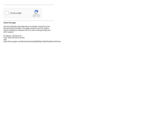
This book is based on two open-access textbooks: Bhattacherjee’s (2012) Social science research: Principles, methods, and practices and Blackstone’s (2012) Principles of sociological inquiry: Qualitative and quantitative methods. I first used Bhattacherjee’s book in a graduate-level criminal justice research methods course. I chose the book because it was an open educational resource that covered the major topics of my course. While I found the book adequate for my purposes, the business school perspective did not always fit with my criminal justice focus. I decided to rewrite the textbook for undergraduate and graduate students in my criminal justice research methods courses. As I researched other open- educational resources for teaching social science research methods, I found Blackstone’s book, which covered more of the social science and qualitative methods perspectives that I wanted to incorporate into my book.
As a result, this open-access textbook includes some content from both previous works along with my own additions based on my extensive experience and expertise in conducting qualitative and quantitative research in social science settings and in mentoring students through the research process. My Ph.D. is in Sociology, and I currently teach undergraduates and graduate students in a criminal justice program at Weber State University. Throughout my career, I have conducted and published the results of research projects using a variety of methods, including surveys, case studies, in-depth interviews, participant observation, content analysis, and secondary analysis of quantitative data. I have also mentored undergraduates in conducting community-based research projects using many of these same methods with the addition of focus groups and program evaluations.
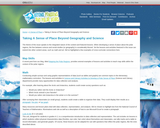
This article provides ideas, lessons and resources on how elementary teachers can integrate map skills, math, and art into lessons about the geography of the Arctic and Antarctica.
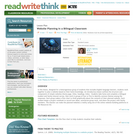
In this lesson, designed for a heterogeneous group of students that includes English-language learners, students work together to plan a website based on their home knowledge. An introductory lesson outlines the structure and components of simple websites (home page, titles, headings, links). Students take home and complete a bilingual student and family interest survey, then work in groups of four or five to identify common themes among the responses. Each group makes a flow chart to think graphically about the contents of their planned website. Each student keeps a project notebook to record new ideas, summarize group work, and share the project with family members. The teacher can make the planned websites a reality using one of the online website-building platforms in the Resources list.